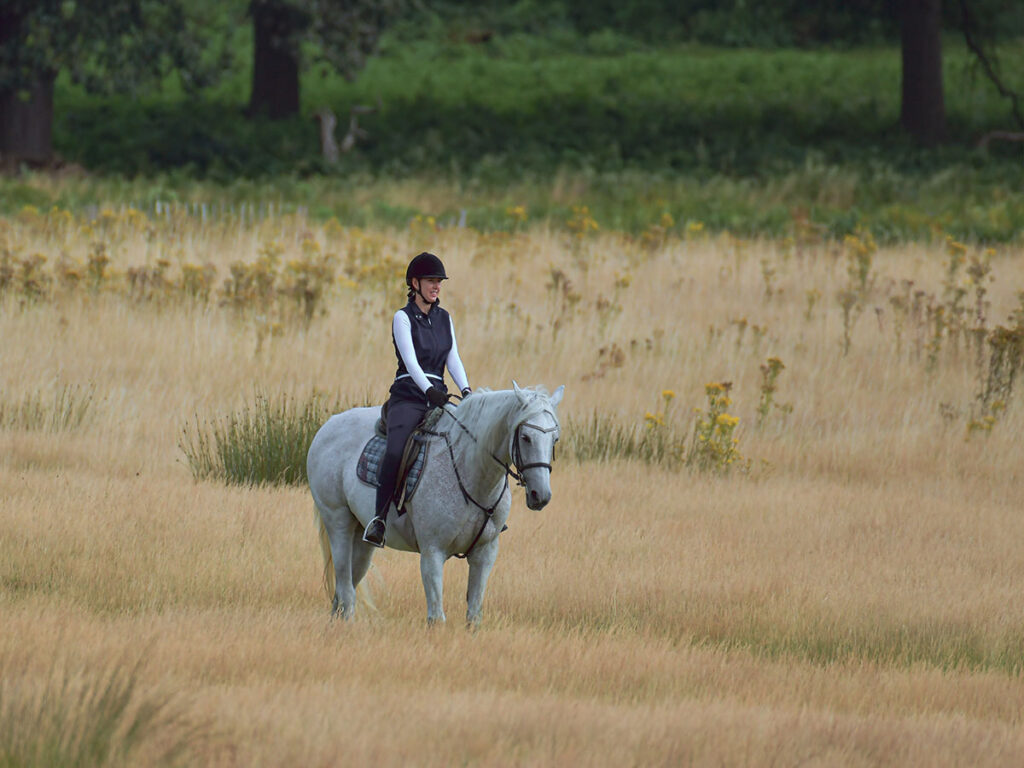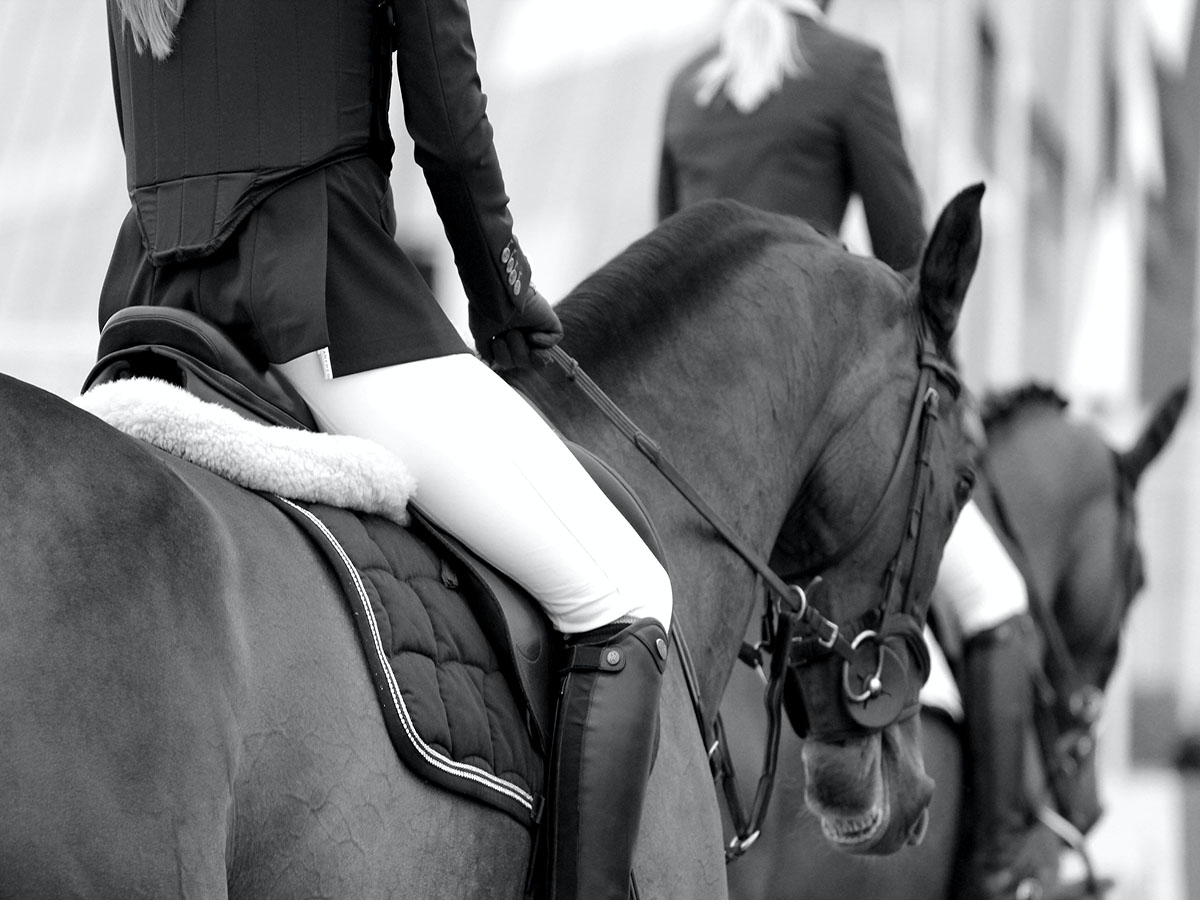
Saddle pads are often an everyday item for any equestrian. They provide an extra padding layer and protection between a saddle and a horse’s back and can significantly improve their comfort level.
Due to changing muscle shape during a horse’s fitness journey, it’s essential to ensure the correct fit of the saddle pad to aid in a good saddle fit – giving optimal comfort to your horse.
If you are looking for the best saddle pads for horse comfort, we have covered a range of specific areas, including the best saddle pad for horses with high withers, which saddle pad keeps a horse the coolest, what size saddle pad fits most horses, and more.
This article will help you select the most elite level of comfort by understanding the different types of saddle pads available and which are best suited to your horse’s needs.

What to consider when choosing a saddle pad
Fit One of the most critical factors when using and selecting a saddle pad is a proper fit to prevent rubbing or pinching. A general rule of thumb is to ensure a few inches of room from the saddle edge to the saddle pad edge.
Material – Options for saddle pads include synthetic materials, wool, and cotton, as the three most common.
- Synthetic materials such as polyester are lightweight and easy to care for, but they may offer a different level of breathability and moisture-wicking capabilities than wool or cotton.
- Wool is a popular choice for saddle pads because it’s naturally moisture-wicking and provides excellent cushioning; however, they are more challenging to wash and maintain.
- Cotton is also a good choice for saddle pads because it’s a natural fibre and breathable, but it is also easy to care for with good wash capabilities.
Other materials becoming more popular in recent years, such as poly-cotton blends and bamboo, offer the durability of synthetics but the improved moisture flow of natural materials.
Padding The thickness and padding of a saddle pad can also impact your horse’s comfort. What padding level you choose is often restricted by the fit of your horse’s saddle. A correctly or recently fitted saddle should not require more extra padding.
Thicker saddle pads offer more cushioning, benefiting horses with sensitive backs. Thicker padding doesn’t necessarily mean better; if the pad is too thick, it can interfere with the saddle’s fit, cause discomfort, and affect your horse’s muscle build-up.
Another school of thought is that padding should vary depending on the time of year or a horse’s fitness level. Depending on your horse’s fitness level, when in limited work and muscle strength or build-up is low, a thicker pad balances out the extra room in the saddle fit.
When a horse is at the top of its fitness level and in heavy work, less padding is required as the muscles are filled out into the saddle fit.
This school of thought, however, depends on your horses’ Saddle fit and when they were fitted in their fitness journey.
Breathability – Breathability and airflow are important considerations when choosing a saddle pad.
Saddle pads with good breathability and airflow help keep the horse’s back cool and dry, preventing discomfort and reducing the risk of skin irritation.
Good airflow in a Saddle Pad can help reduce rubbing and excessive sweating; this is important, especially in the cold winter when washing a horse is ideally avoided.

What size saddle pad fits most horses?
To determine the correct size of a saddle pad, measure the length of the saddle from front to back and the width from side to side.
Most saddle pads are available in standard sizes, including small, medium, and large. A medium-sized saddle pad should fit most horses.
Are thicker saddle pads better?
Thicker saddle pads offer more cushioning, but they’re only sometimes better.
It’s essential to find a saddle pad with the right amount of padding to provide adequate cushioning without interfering with the saddle’s fit or your horse’s muscle development.
If the pad is too thick, it can interfere with the fit of the saddle and cause discomfort.

Best saddle pads for horses with high withers
Horses with high withers can be challenging to fit with a saddle pad. The pad must provide enough clearance from the withers, but it shouldn’t pressure the area.
Luckily you can look for saddle pads specifically designed for horses with high withers, such as those with cutouts or contoured designs.
Although these high wither styles have more limited options in material and padding.
Our top tip is to check these high-wither design saddle pads on your horse’s shape to ensure the higher-wither form of the pad doesn’t create an increased and focused pressure point further down the pad where the high-wither design joins the central pad.
What saddle pad keeps a horse cool?
The best saddle pads for hot weather or to keep a horse cool and not aggravate sweat production depend on the pad’s material and its properties for breathability and airflow.
Natural materials such as saddle pads made from cotton, bamboo, or wool are good options for the best airflow because these materials are naturally moisture-wicking and breathable.
These materials are moisture-wicking saddle pads due to their specific fibre construction that aids air circulation or temperature regulation.
Saddle pads with perforations or mesh panels can also improve airflow but are often less effective. It is also wise to check the padding material when searching for a Saddle Pad, not just the outer fabric.
Regardless of a saddle pad being made out of cotton, if the padding is a polyester form, this will impact the cotton’s ability to allow airflow and create a thermal barrier severely restricting breathability.

How often should you buy a new saddle pad?
The lifespan of a saddle pad depends on the quality of the materials and how often it’s used. On average, you should replace a saddle pad every one to two years.
Signs that it’s time to replace your saddle pad include visible wear and tear, loss of padding, and a decrease in the pad’s overall effectiveness.
Best brand of saddle pads
There are many brands of saddle pads on the market, each with its own unique features and benefits.
Research different brands and read reviews to determine which brand is best for you and your horse. The best brand of saddle pads for you will depend on your horse’s specific needs and your budget.
The right saddle pad ensures your horse’s comfort and prevents discomfort and skin irritation.
When selecting a saddle pad, consider fit, material, thickness, breathability, and airflow factors. You can help your horse feel comfortable and perform at their best with the right saddle pad.





